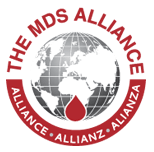GVHD liver
Home Demo › forums › Patient Message Board › GVHD liver
- This topic has 1 reply, 1 voice, and was last updated 18 years, 7 months ago by
shirlsgirl.
-
AuthorPosts
-
August 31, 2005 at 1:59 pm #8507
doreen
MemberI may be reading into this too quickly but there may be a chance i could have gvhd of the liver. any experiences with this?
September 1, 2005 at 2:22 am #8508shirlsgirl
MemberHi Doreen,
How are you doing? Hope you are feeling better. I found a very interesting article…thought you might be interested in.
take care,
Jody
Ultraviolet Radiation May Successfully Treat Acute Graft-Versus-Host Disease
Results from a study published in the journal Blood report that a new treatment strategy utilizing ultraviolet radiation may be a successful treatment for patients with acute graft-versus-host disease (GVHD) following an allogeneic stem cell transplant that is not responsive to standard therapy.
Many hematologic cancers including leukemias, lymphomas and myelomas are treated effectively with an allogeneic stem cell transplant (allogeneic SCT). Stem cells are immature blood-forming cells that are produced in the bone marrow (spongy material inside large bones). Stem cells develop into the three types of blood cells: red blood cells which carry Oxygen to tissues, white blood cells which fight infection, and platelets which aid the blood in clotting. Treatment for cancer consisting of high-dose chemotherapy and/or radiation therapy is effective at killing cancer cells, but also destroys bone marrow stem cells, leading to complications such as anemia, infection and bleeding. The treatment strategy utilizing SCT is an attempt to restore the blood producing stem cells after high-dose chemotherapy and/or radiation has reduced them to dangerously low levels. The process of an allogeneic SCT includes the collection of stem cells from a donor that are later infused into the patients after high-dose treatment. An important additional benefit of an allogeneic SCT is that the donor’s infused cells may actually attack and kill the patient’s cancer cells.
Although an allogeneic SCT may prove very beneficial in the treatment against cancer, a life-threatening complication, called acute graft-versus-host disease (GVHD) may occur from the procedure in a large number of patients. Graft-versus-host disease is caused by the attack of infused donor cells on patient’s healthy tissues, mainly affecting the patient’s liver, intestine and skin. Standard treatment for GVHD commonly consists of certain drugs to suppress the immune system. However, some patients do not respond to the use of standard immunosuppressive therapy and GVHD can not be effectively treated in these patients.
Recently, researchers from Austria have reported that the use of extra corporeal photochemotherapy (ECP) may prove successful in the treatment of acute GVHD that is not responsive to steroid treatment following an allogeneic SCT. The treatment strategy utilizing ECP involves the filtering of a patient’s circulating blood in order to collect certain immune cells which are responsible for the attack on the patient’s tissues and creating GVHD. Once these cells have been collected, they are treated outside the body with a specific compound that becomes active when exposed to ultraviolet (UV) light. These treated immune cells become inactivated and are no longer able to attack the patient’s healthy tissue after exposure to UV light, thus reversing the process of GVHD. They are then infused back into the patient.
In a recent study, ECP was evaluated in 21 patients who developed acute GVHD that was not responsive to steroid therapy following an allogeneic SCT. Three months after initiation of ECP, complete resolution of GVHD occurred in 67% of patients with liver involvement, 60% with skin involvement and none with gastrointestinal involvement. Currently, 57% of patients are alive at an average of 25 months following treatment. These findings indicate that ECP is very well tolerated and effective therapy for acute GVHD involving the liver and skin that is not responsive to steroid treatment. Further studies are needed to determine optimal doses and schedules for ECP treatment in patients with acute GVHD.
Persons experiencing GVHD following and allogeneic SCT may wish to speak to their physician about the risks and benefits of participating in a clinical trial further evaluating ECLP or other promising new treatment strategies. Two sources of information on ongoing clinical trials that can be discussed with your doctor include comprehensive, easy to use services provided by the National Cancer Institute ( cancer.gov) or eCancerTrials.com. eCancerTrials.com performs personalized clinical trial searches on behalf of patients. ( Blood, Vol 96, No 7, pp 242602431, 2000)
© 1998-2005 CancerConsultants.com All Rights Reserved.
-
AuthorPosts
Register for an account, or login to post to our message boards. Click here.
- You must be logged in to reply to this topic.









